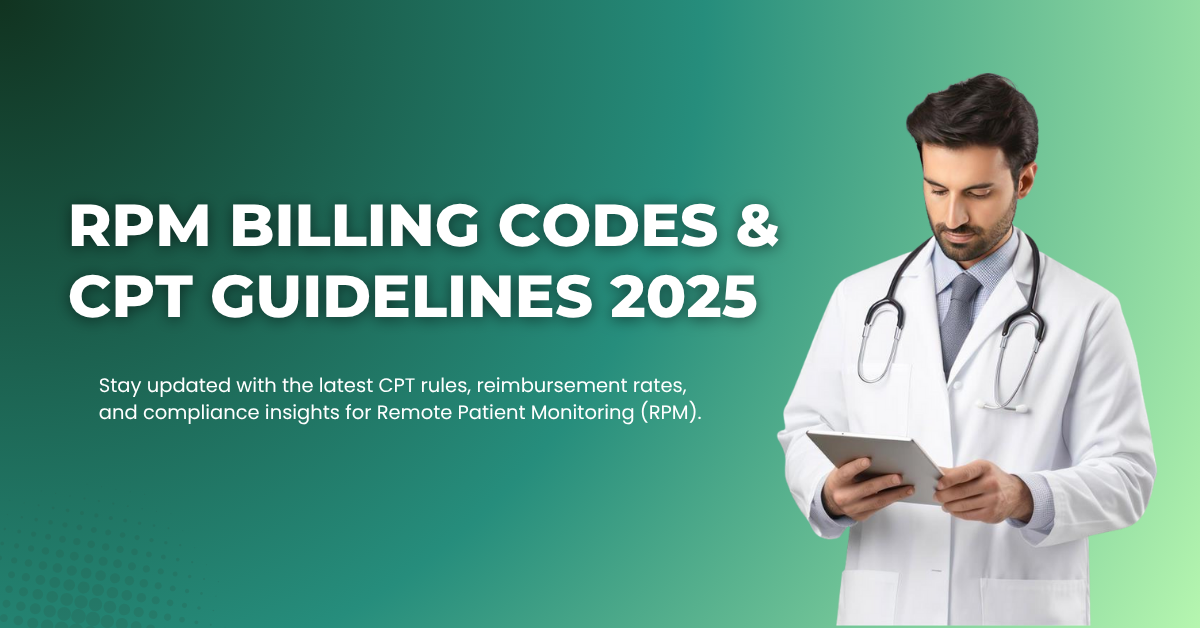
Posted By: Medsole RCM
Posted Date: Oct 27, 2025
Providing proactive healthcare services beyond the clinic walls is now complemented with consistent reimbursements for Remote Patient Monitoring (RPM) services. Most providers view RPM services as an opportunity to receive consistent proactive reimbursement on high-impact billing for the healthcare services provided.
Decoding the reimbursement workflows for every CPT code can be complex, tedious, and exhausting. Understanding the billing rules involves working with the medical-finance dialect.
This guide articulates all RMP billing codes, reimbursements, and policies effective in 2025. Its purpose is to assist you in simplifying and clarifying even the 'knotty' aspects of the process.
What is Remote Patient Monitoring (RPM)?
Its purpose is to assist you in simplifying and clarifying even the 'knotty' aspects of the process.
Remote Patient Monitoring (RPM) systems use medical devices to track patients' health with vital signs like blood pressure, glucose, and oxygen levels outside the clinic. These systems include Remote Patient Monitoring.
When the information is sent electronically to a provider or RPM platform, it is chargeable using prescribed CPT codes.
Learn more about Telehealth best practices.
How RPM Works Step-by-Step
Complete List of Remote Patient Monitoring CPT Codes (2025 Edition)
Below is the complete list of RPM CPT code descriptions for 2025, showing their billing frequency and approximate reimbursement rates.
|
CPT Code |
CPT Code Description |
Billing Frequency |
Approx. 2025 Reimbursement |
|---|---|---|---|
|
99453 |
Initial device setup & patient education |
Once per patient | $19.65 |
|
99454 |
Device supply, data transmission & reporting (requires ≥16 days of data) |
Every 30 days |
$46.83 |
|
99457 |
Treatment management services, first 20 minutes |
Every 30 days |
$48.14 |
|
99458 |
Add-on for each additional 20 minutes |
Every 30 days |
$38.64 |
|
99091 |
Physician or qualified provider's data review & interpretation (30 mins) |
Every 30 days |
$52.71 |
Tip: These five core CPT codes represent the entire RPM workflow—from setup (99453) to monthly data management (99457/99458) and clinical interpretation (99091).
RPM CPT Codes Explained
99453 CPT Code Description – Initial Setup & Patient Education
CPT 99453 covers the initial time and effort to teach patients how to use RPM devices properly. It's billed once per patient when the device setup and onboarding are complete.
This code ensures you're reimbursed for the educational time spent before monitoring starts.
Standard error: Billing it more than once—CMS only allows this code per episode of care.
99454 CPT Code Description – Device Supply and Data Transmission
This code covers providing the RPM device, collecting and transmitting patient data for at least 16 days in 30 days, and generating reports.
Data must be automatically uploaded to qualify—handwritten logs or self-reported data don't count.
99457 CPT Code Description – First 20 Minutes of Treatment Management
CPT code 99457 pertains to the first 20 minutes per month a provider spends analyzing Remote Patient Monitoring (RPM) data, determining treatment, and engaging with the patient.
To bill for the service, the provider must have interactive communication through telephone, messaging, or video.
Pro Tip: This code bridges patient engagement and revenue. Even a brief check-in counts if appropriately documented.
99458 CPT Code Description – Add-On for Each Additional 20 Minutes
Additional codes have been assigned to designated visits where a provider spends over 20 minutes with a patient within a 30-day cycle.
Furthermore, if your team engages in 40- or 60-minute intervals discussing the data, you may append CPT 99458 for every additional 20 minutes of work performed.
This code is most frequently used together with 99457 for the patients who require more intensive intervals of care coordination.
99091 CPT Code Description – Physician Review and Interpretation
CPT 99091 reimburses physicians or qualified professionals for at least 30 minutes per month spent analyzing RPM data.
It's best used for complex cases or where the provider personally reviews multiple data streams from RPM devices.
New AMA CPT Code Updates for 2025
The American Medical Association's CPT Editorial Panel approved several new codes in 2024 that will take effect in January 2026, streamlining RPM and RTM billing.
What's New
These adjustments focus on flexibility and… for RPM billing, especially for follow-up monitoring of… surgical, or short-term cases.
For further official information, you can review the CMS guidelines.
Remote Therapeutic Monitoring (RTM) CPT Codes
RTM involves monitoring non-physiological data, including therapy adherence, pain, and… exercise activities.
Here's the complete RTM CPT code description list for reference:
|
CPT Code |
CPT Code Description |
Focus Area |
|---|---|---|
|
98975 |
Setup & patient education |
General RTM |
|
98976 |
Supply of respiratory monitoring devices |
Pulmonary |
|
98977 |
Supply of musculoskeletal devices |
Physical therapy |
|
98978 |
Supply of cognitive behavioural therapy devices |
Behavioural |
|
98980 |
First 20 minutes of RTM management |
Data review |
|
98981 |
An additional 20 minutes of management |
Add-on time |
Note: RTM allows self-reported data unlike RPM and doesn't always require automatic device uploads.
Telehealth and Communication Codes Supporting RPM
RPM often overlaps with telehealth services. These telephonic CPT code descriptions apply to phone-based assessments and virtual care coordination.
|
CPT Code |
CPT Code Description |
Who Can Bill |
|---|---|---|
|
98966 |
5–10 minutes of telephonic assessment |
Non-physician (RN, NP, therapist) |
|
98967 |
11–20 minutes of telephonic assessment |
Non-physician |
|
98968 |
21–30 minutes of telephonic assessment |
Non-physician |
|
99441–99443 |
5–30 minutes of E/M phone visits |
Physicians, NPs, PAs |
Pro Tip: Use these codes for separate, documented telehealth sessions from RPM monitoring time.
RPM Billing Rules and Documentation Requirements
Billing correctly for RPM services requires careful documentation that is aligned with CMS rules.
1. The 16-Day Rule
To bill 99454, data must be collected for at least 16 unique days within a 30-day window.
2. The 30-Day Billing Period
RPM codes follow a rolling 30-day billing cycle—not a calendar month. Track your time carefully.
3. The One-Provider Rule
Only one provider can bill RPM codes per patient within the same 30-day period. The first claim submitted is honored.
4. Documentation Must Include
Tip: Solid documentation is the difference between a paid and denied claims.
Learn how efficient revenue cycle management ensures accuracy and compliance in medical billing workflows.
RPM Billing for Different Care Settings
FQHCs and RHCs
Federally Qualified Health Centers and Rural Health Clinics can bill RPM and RTM services using:
|
Code |
CPT Code Description |
Average Payment |
|---|---|---|
|
G0511 |
General care management or RPM services |
$72.98 |
|
G0512 |
Chronic pain management add-on |
Varies by payer |
Even though these are bundled codes, accurate recordkeeping and 30-day cycle tracking are still required for compliance.
RPM Reimbursement Rates for 2025
Here's a quick reference of estimated RPM reimbursement rates 2025, based on the latest CMS Physician Fee Schedule.
|
CPT Code |
CPT Code Description |
Estimated 2025 Rate |
Billing Period |
|---|---|---|---|
|
99453 |
Set up & patient education |
$19.65 |
One-time |
|
99454 |
Device supply & transmission |
$46.83 |
Monthly |
|
99457 |
20-minute management |
$48.14 |
Monthly |
|
99458 |
An additional 20 minutes |
$38.64 |
Monthly |
|
99091 |
Data review & interpretation |
$52.71 |
Monthly |
|
98980 |
RTM first 20 minutes |
$49.78 |
Monthly |
|
98981 |
RTM additional 20 minutes |
$39.30 |
Monthly |
|
G0511 |
RHC/FQHC RPM/RTM bundled |
$72.98 |
Monthly |
Compliance and Audit Readiness
The Office of Inspector General (OIG) found that nearly 30% of RPM claims had missing documentation or invalid device data. Avoid denials by staying proactive.
Compliance Checklist
The Future of Remote Patient Monitoring
RPM rapidly expands into new specialties—from chronic care to behavioral and preventive health.
Key 2025–2026 Trends
Providers adopting compliant, tech-driven RPM programmes early will see the most significant revenue growth.
How MedSole RCM Simplifies RPM Billing
Invoicing various CPT codes, overseeing 30-day cycles and documentation, and handling multiple documentation are convoluted and easily result in disarray.
Regarding the automation of eligibility checks, time log management, and one-time, precise claims coding, MedSole RCM assists the healthcare segment in streamlining the RPM billing process.
Your practice can avoid denials and maintain efficient reimbursement with expert oversight and
compliance reassurance.
Quick Reference: CPT Code Descriptions Summary
|
CPT Code |
CPT Code Description |
Billing Frequency |
Purpose |
|---|---|---|---|
|
99453 |
Set up & patient education |
Once per patient |
Initiates RPM service |
|
99454 |
Device supply & data transmission |
Monthly |
Covers data collection |
|
99457 |
20 minutes of treatment management |
Monthly |
Management & communication |
|
99458 |
An additional 20 minutes of management |
Monthly |
Add-on for extended care |
|
99091 |
Physician data review & interpretation |
Monthly |
For complex analysis |
|
98975–98981 |
RTM codes for therapy tracking |
Monthly |
Non-physiological monitoring |
|
(98966–98968) |
Telephonic assessments |
As needed |
Virtual check-ins |
|
(G0511–G0512) |
Facility care management |
Monthly |
FQHC/RHC billing |
An understanding of each RPM CPT code description is vital in maintaining appropriate billing processes, avoiding rejection of claims, and capturing all the revenue which is rightfully theirs.
Conclusion
As the RPM is likely to expand, the result of tracking shifting CPT codes and billing instructions will be tangible in the speed of payment to the providers.
Practices will avoid billing and revenue risks while taking full advantage of revenue opportunities through compliance and revenue optimization.
When you have specialized support for your revenue cycle management, you can concentrate on what matters most—positive patient outcomes, not tedious documentation.
Disclaimer
Information is based on CMS and AMA updates for 2025. Reimbursement values vary by location and payer.
Q1. What is RPM in medical billing?
RPM in medical billing is the collection of patients’ health data through digital devices (e.g., blood pressure or glucose monitors) and billing those services for reimbursement using specific CPT codes.
Q2. Can CCM and RPM be billed together?
Yes, chronic care management and remote patient monitoring can be billed at the same time as long as all of the criteria are fulfilled, but the reduction in the time allocated for each service should be recorded and billed as separate entities.
Q3. How to bill for Remote Therapeutic Monitoring (RTM)?
CPT codes 98975 to 98981, which include billing for the monitoring of the pain, movement of the patient, and general observation of a patient, as well as the paying of devices and education, apply.
Q4. What is the difference between RPM and RTM?
Remote Patient Monitoring captures and processes data of a patient’s heart rate or blood pressure from devices that are in use, while Remote Therapeutic Monitoring assesses and records data about the patient in regard to their physical activity or other actions that are medication-related and are often self-reported by the patients.
Recent Blogs
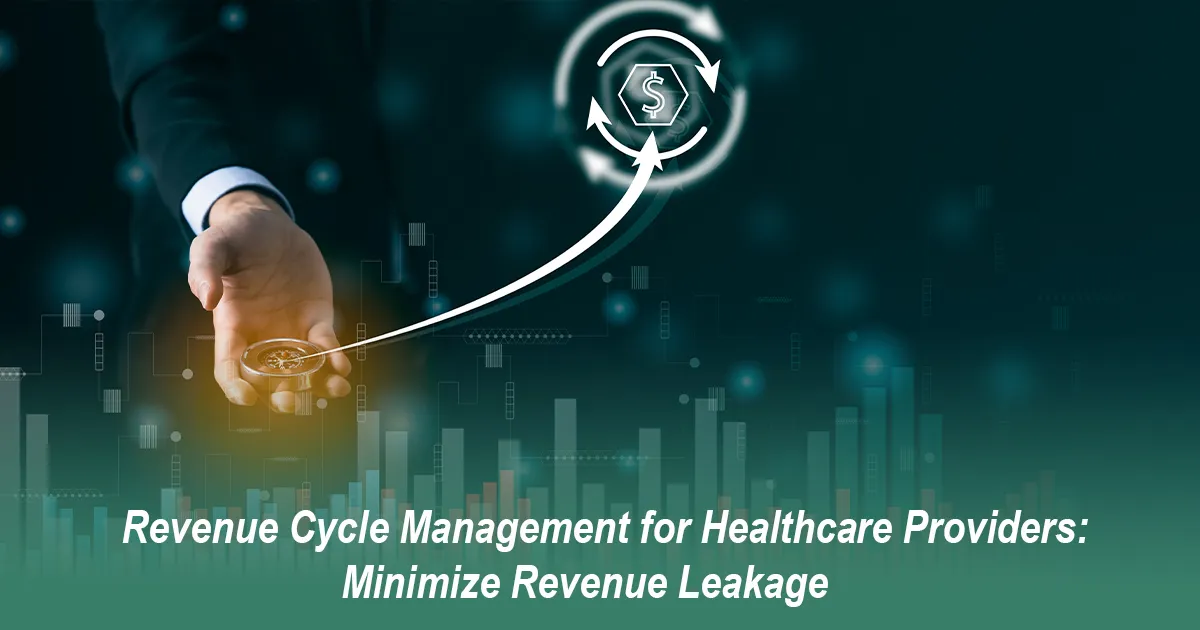
Posted Date: Jun 24, 2025
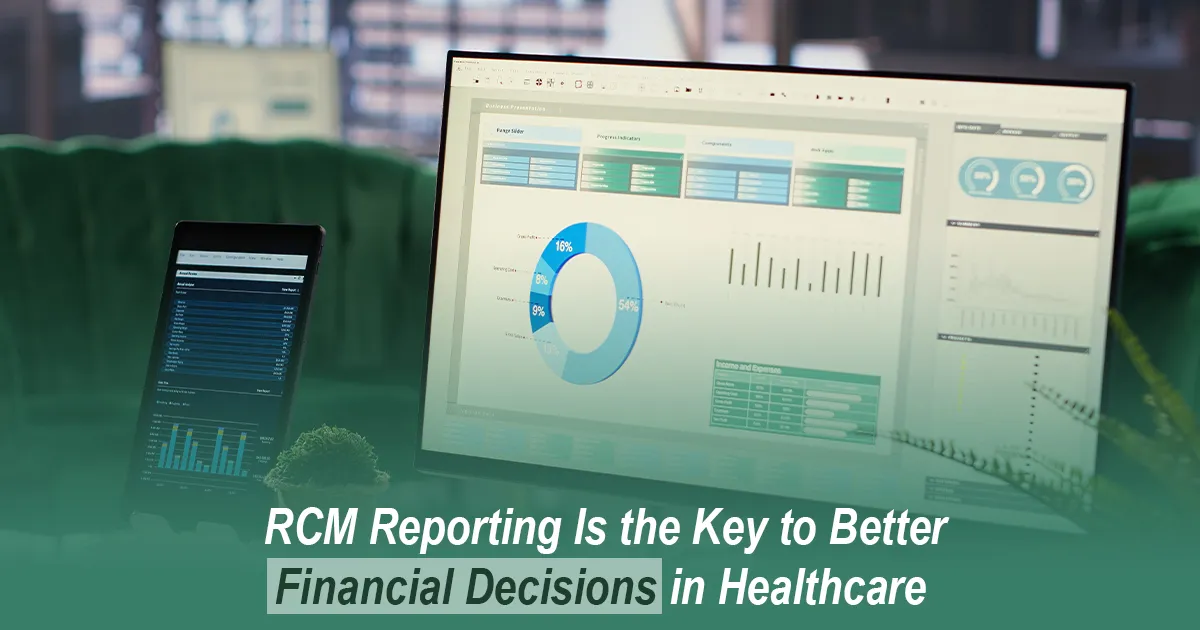
Posted Date: Jun 26, 2025

Posted Date: Jun 28, 2025
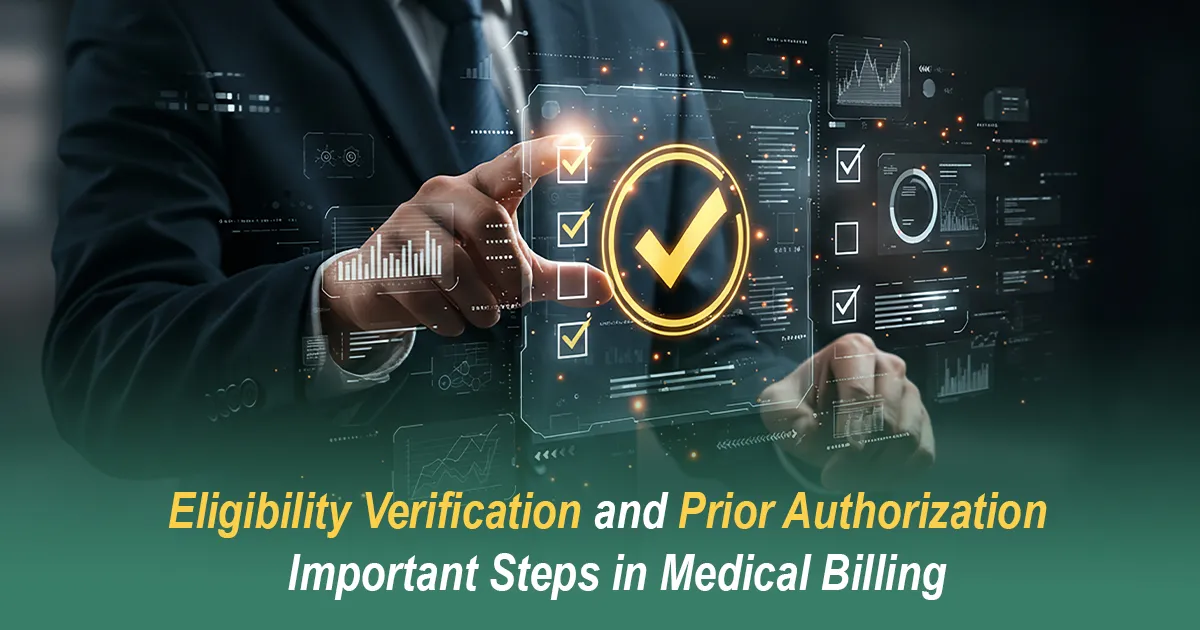
Posted Date: Jun 30, 2025

Posted Date: Jul 02, 2025

Posted Date: Jul 04, 2025
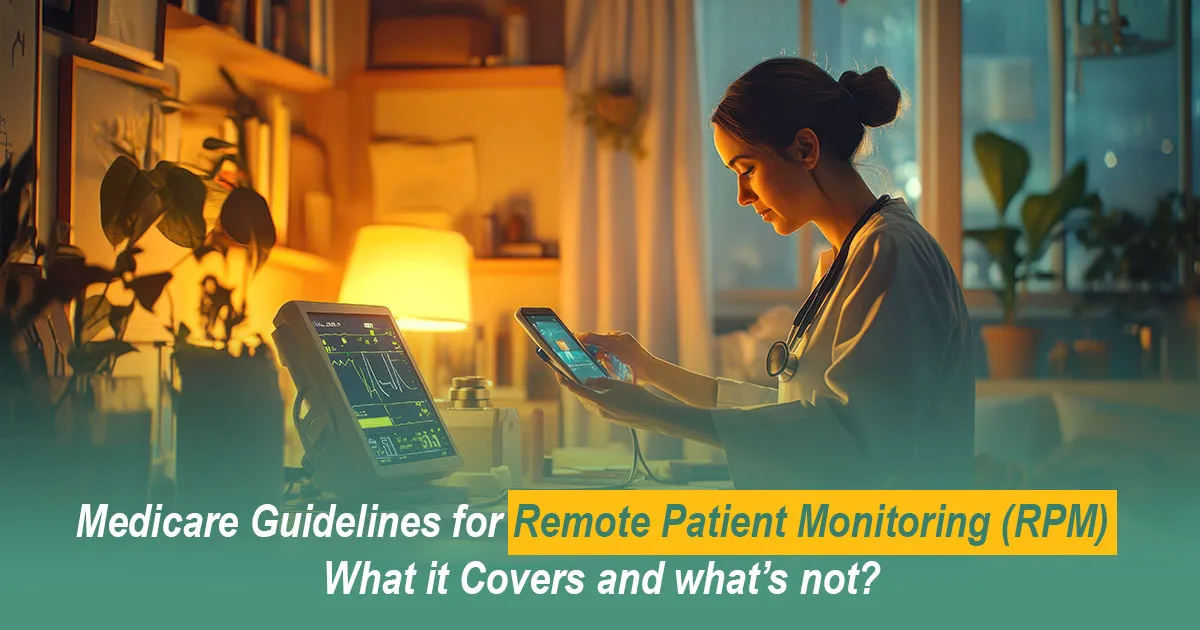
Posted Date: Jul 07, 2025
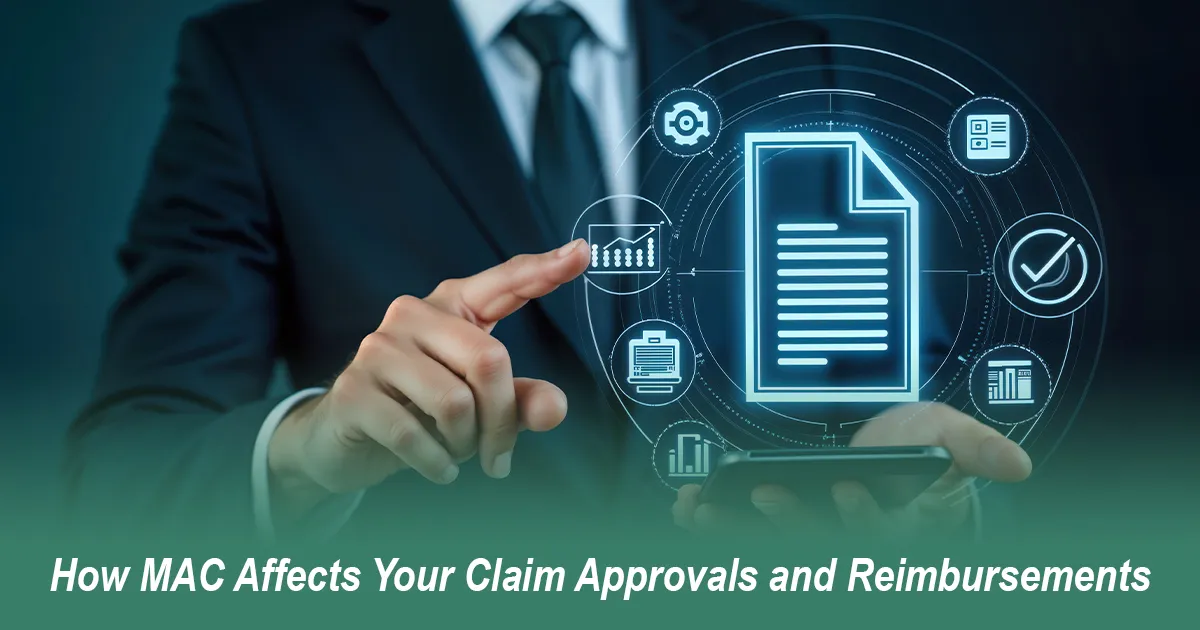
Posted Date: Jul 09, 2025

Posted Date: Jul 11, 2025

Posted Date: Jul 14, 2025

Posted Date: Jul 16, 2025

Posted Date: Jul 18, 2025

Posted Date: Jul 22, 2025

Posted Date: Jul 23, 2025
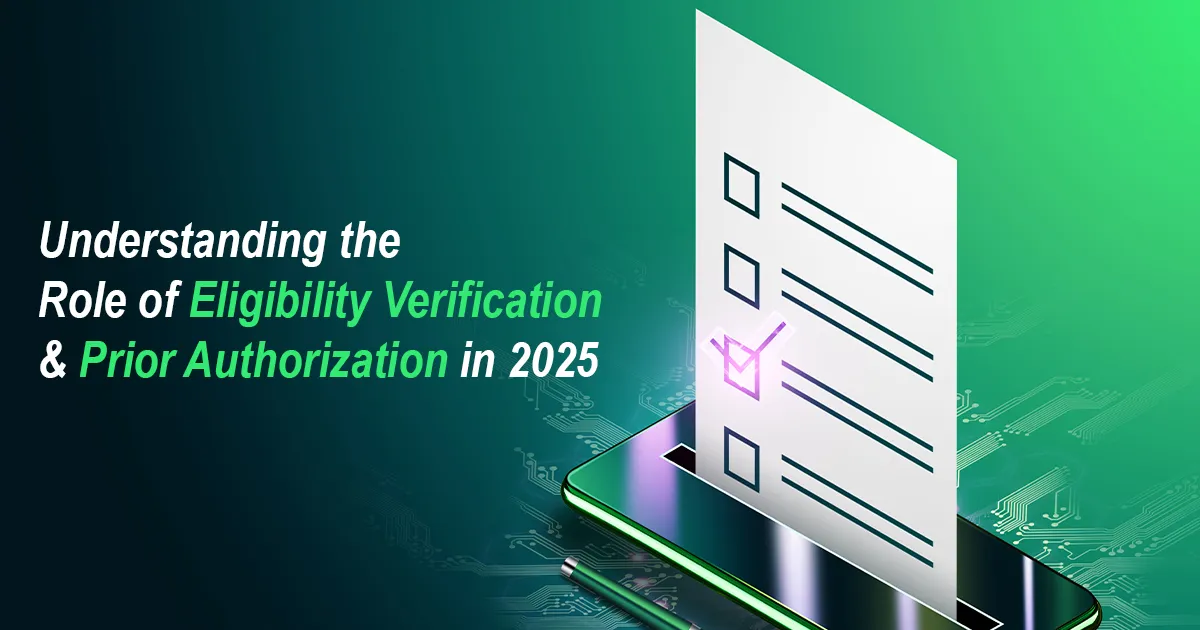
Posted Date: Jul 25, 2025
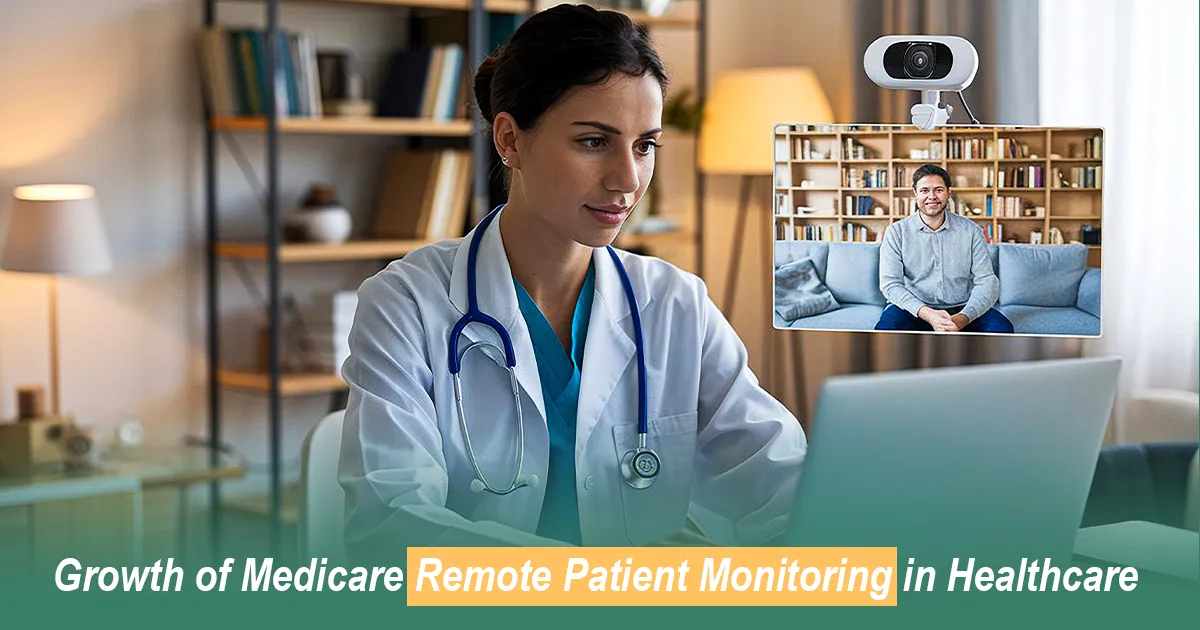
Posted Date: Jul 28, 2025

Posted Date: Aug 01, 2025

Posted Date: Aug 04, 2025

Posted Date: Aug 06, 2025
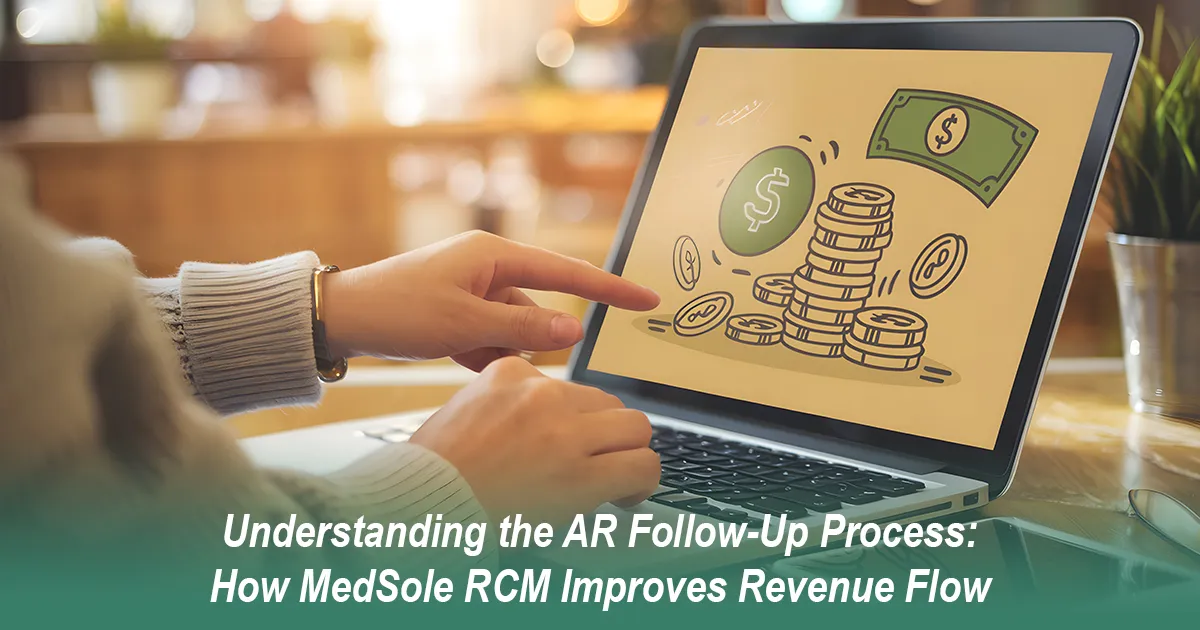
Posted Date: Aug 08, 2025
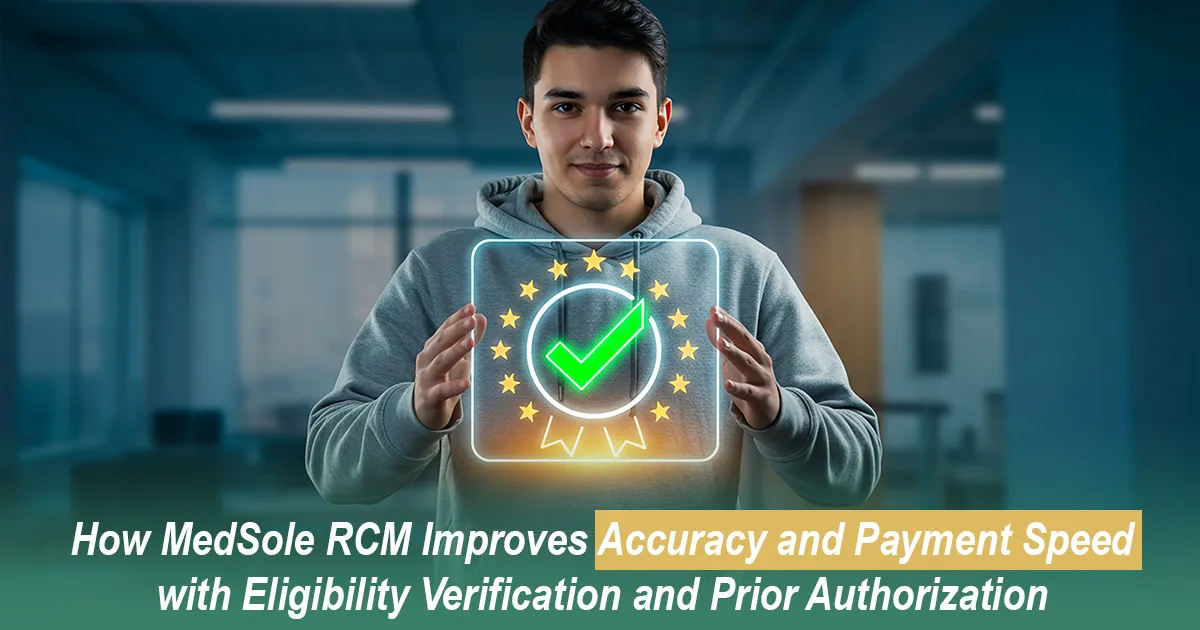
Posted Date: Aug 11, 2025
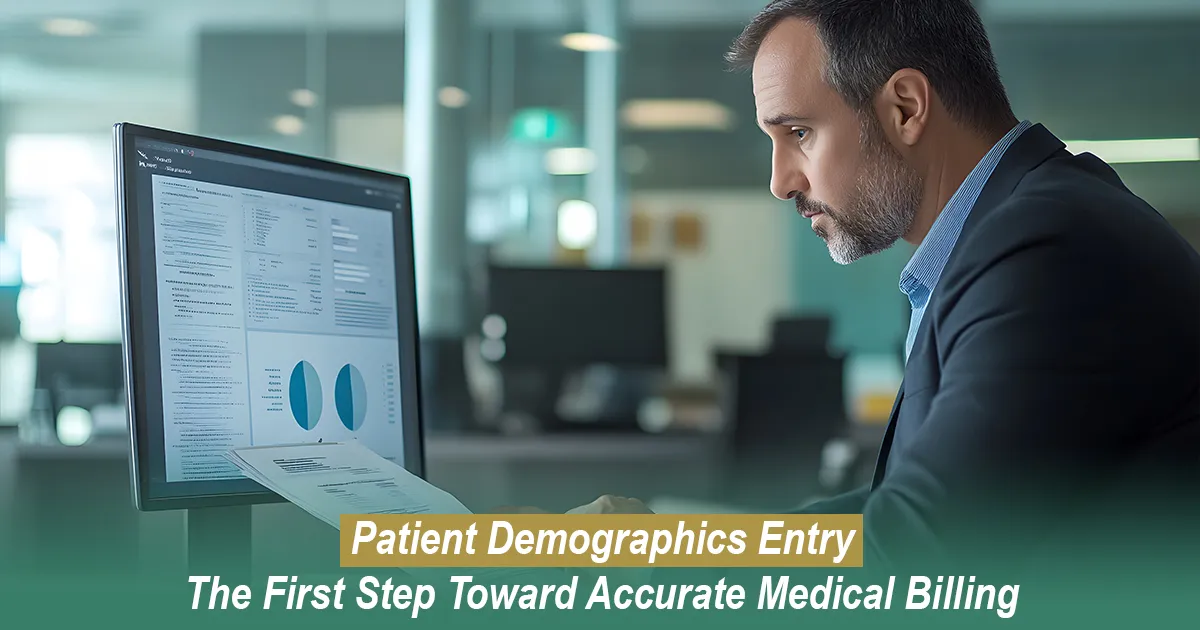
Posted Date: Aug 14, 2025

Posted Date: Aug 18, 2025
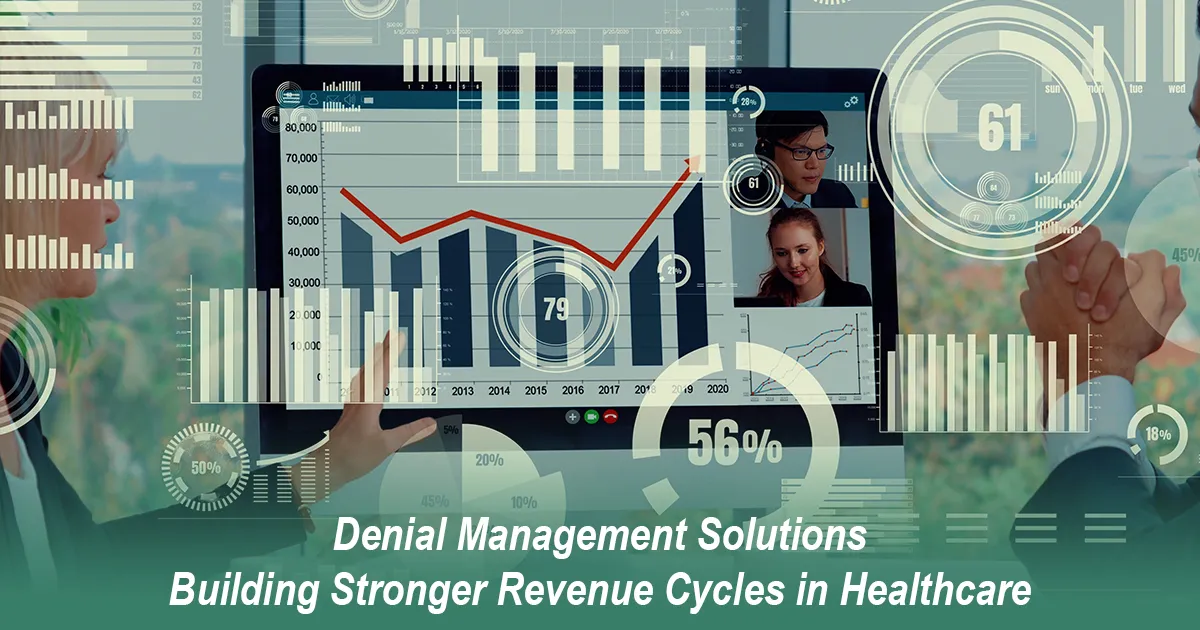
Posted Date: Aug 20, 2025
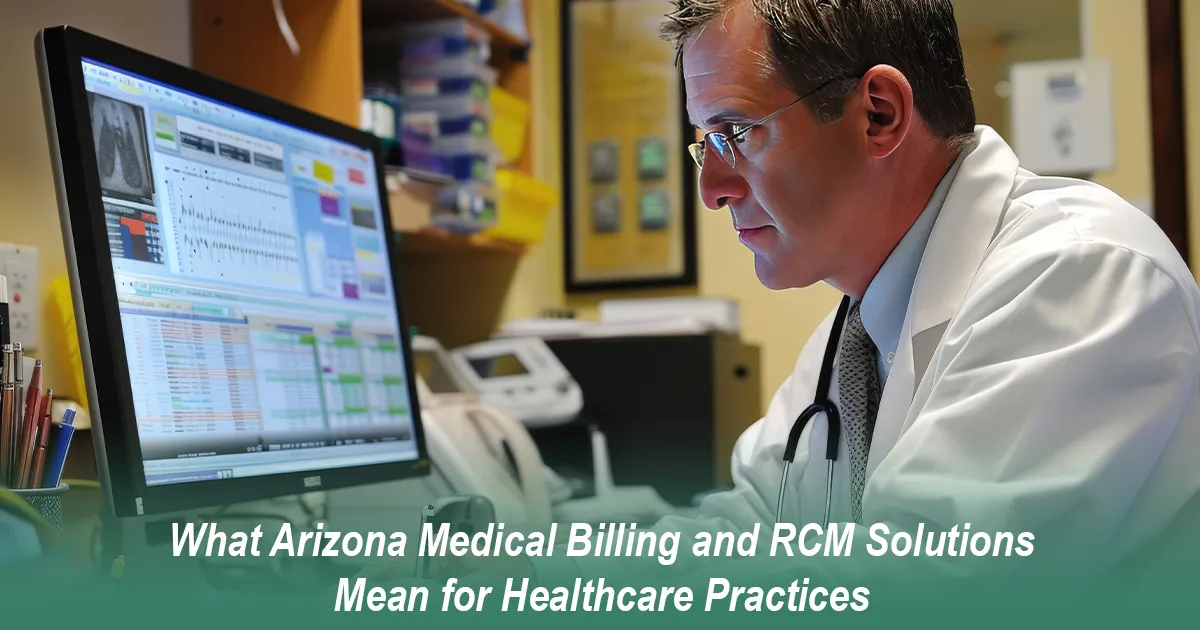
Posted Date: Aug 25, 2025
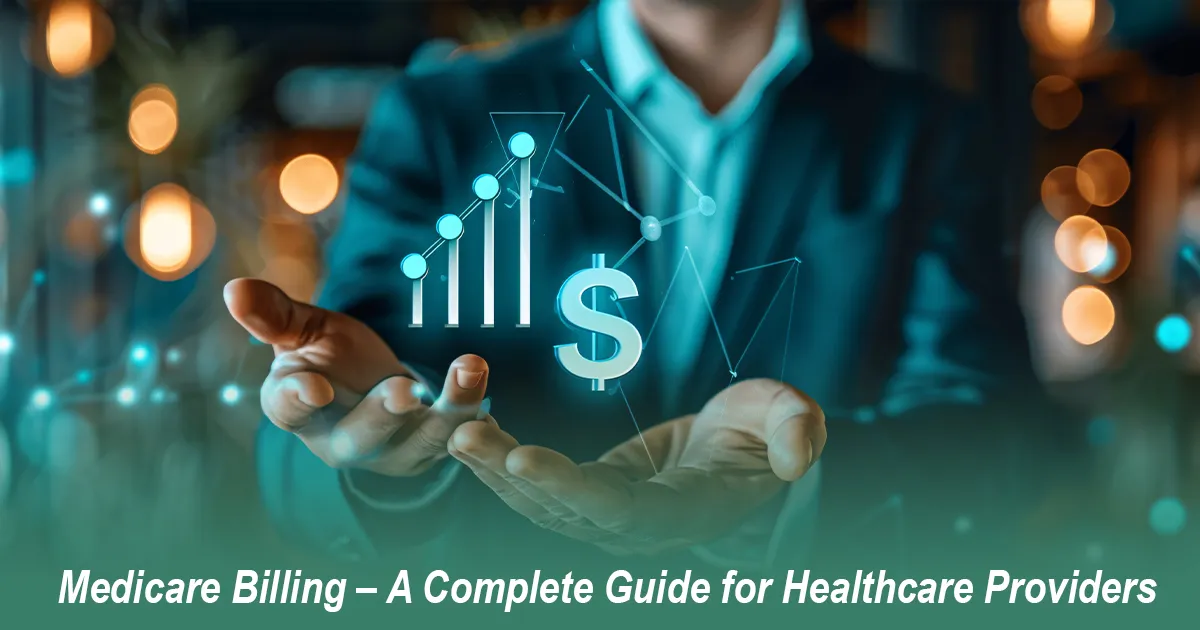
Posted Date: Aug 27, 2025
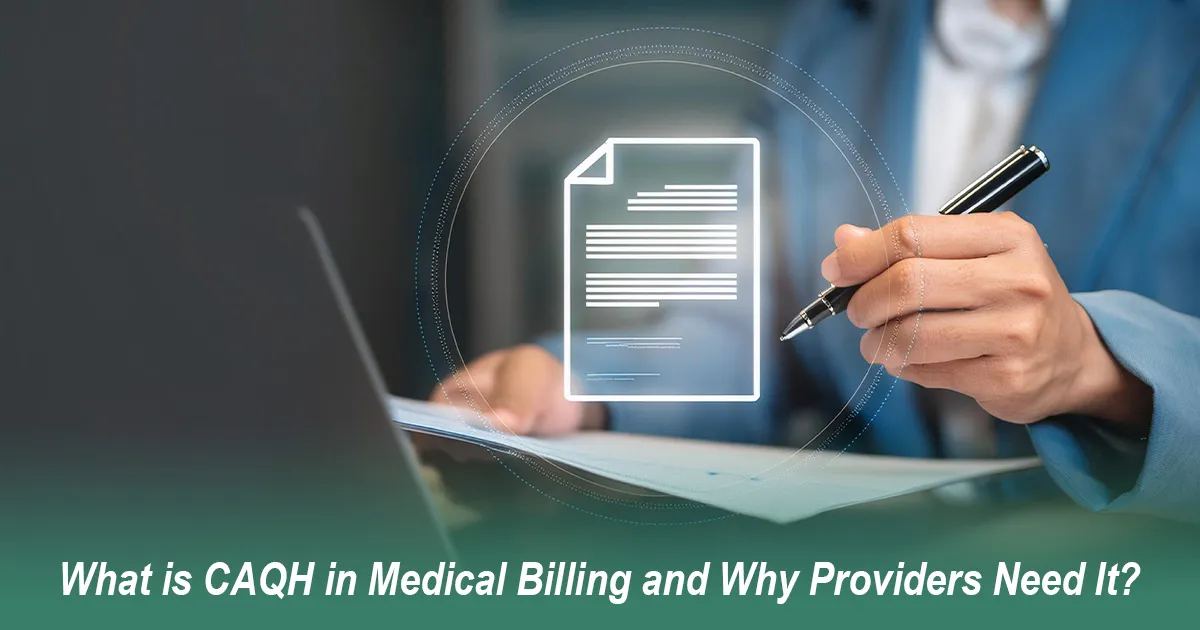
Posted Date: Aug 29, 2025

Posted Date: Sep 03, 2025

Posted Date: Sep 05, 2025

Posted Date: Sep 08, 2025

Posted Date: Sep 15, 2025
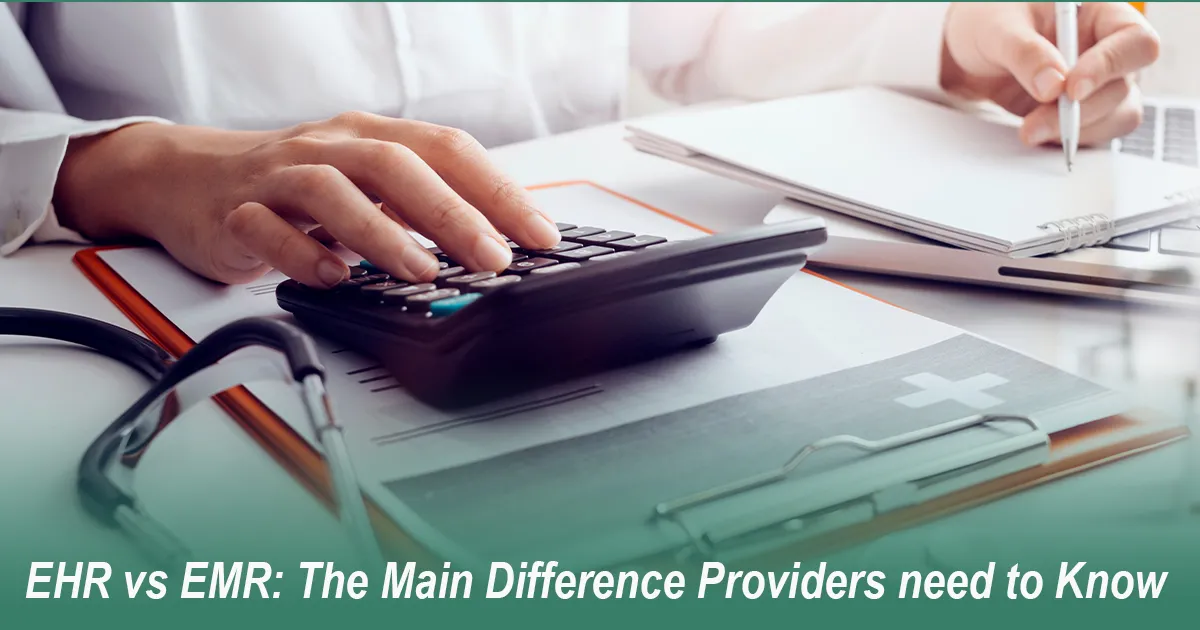
Posted Date: Sep 18, 2025

Posted Date: Sep 22, 2025

Posted Date: Sep 24, 2025

Posted Date: Sep 26, 2025
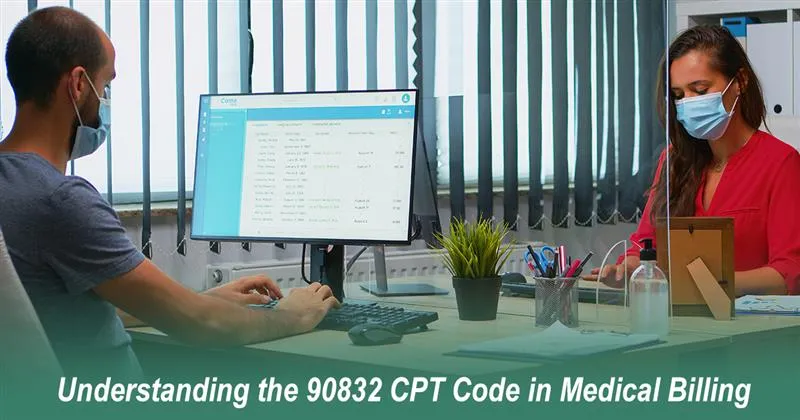
Posted Date: Sep 29, 2025
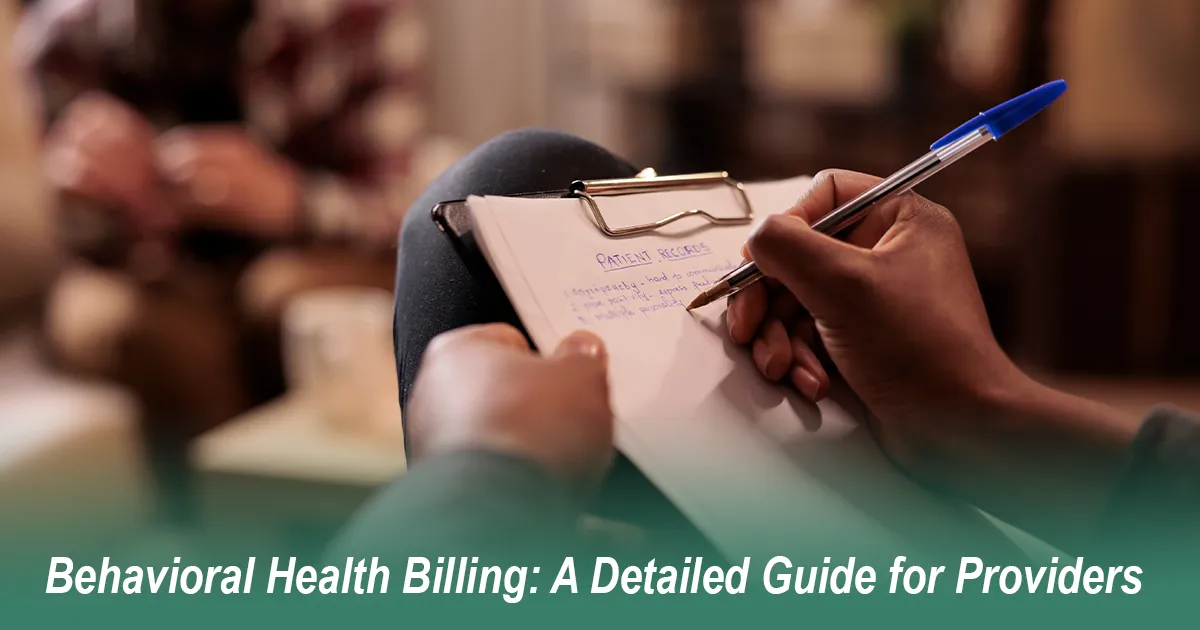
Posted Date: Oct 02, 2025
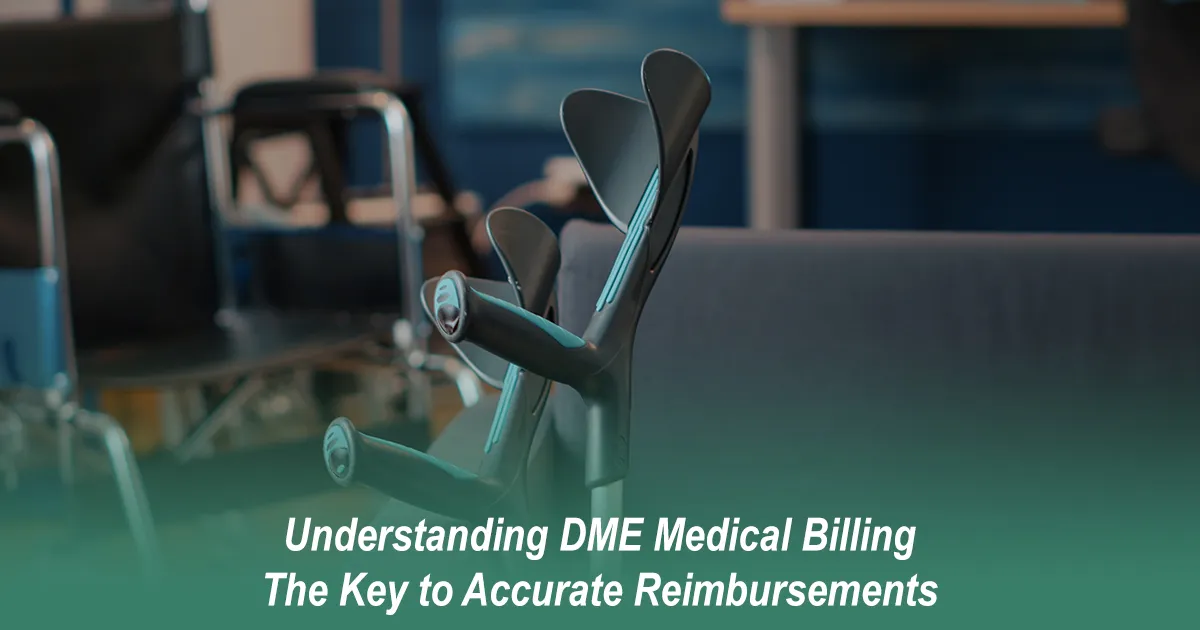
Posted Date: Oct 13, 2025

Posted Date: Oct 16, 2025

Posted Date: Oct 23, 2025

Posted Date: Oct 27, 2025

Posted Date: Oct 28, 2025
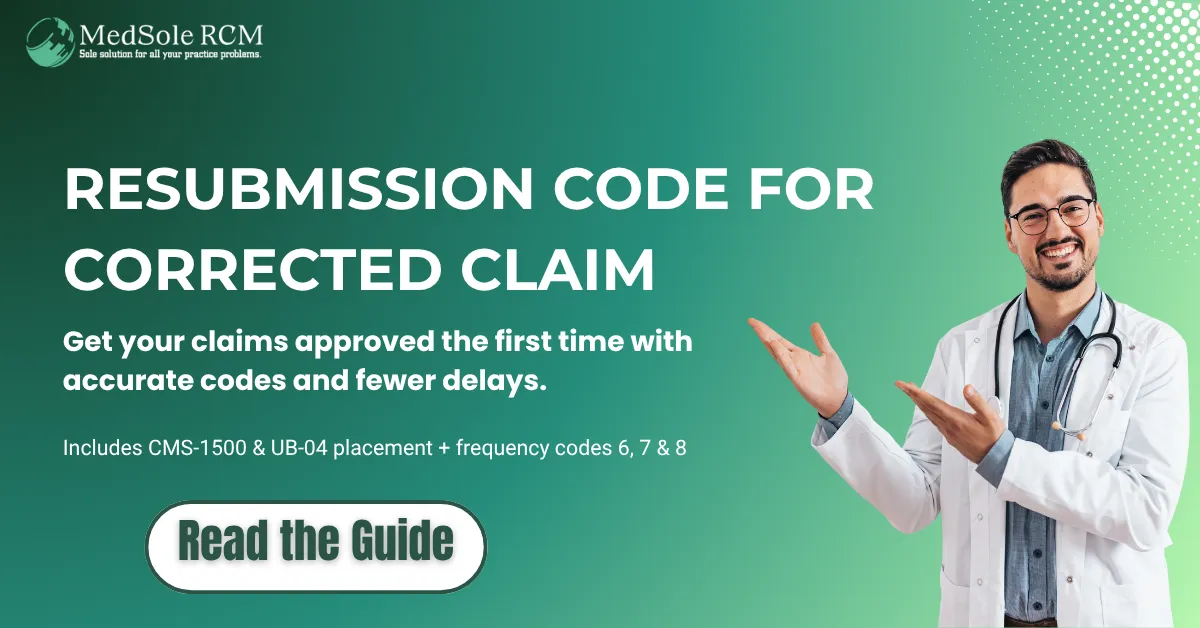
Posted Date: Oct 30, 2025
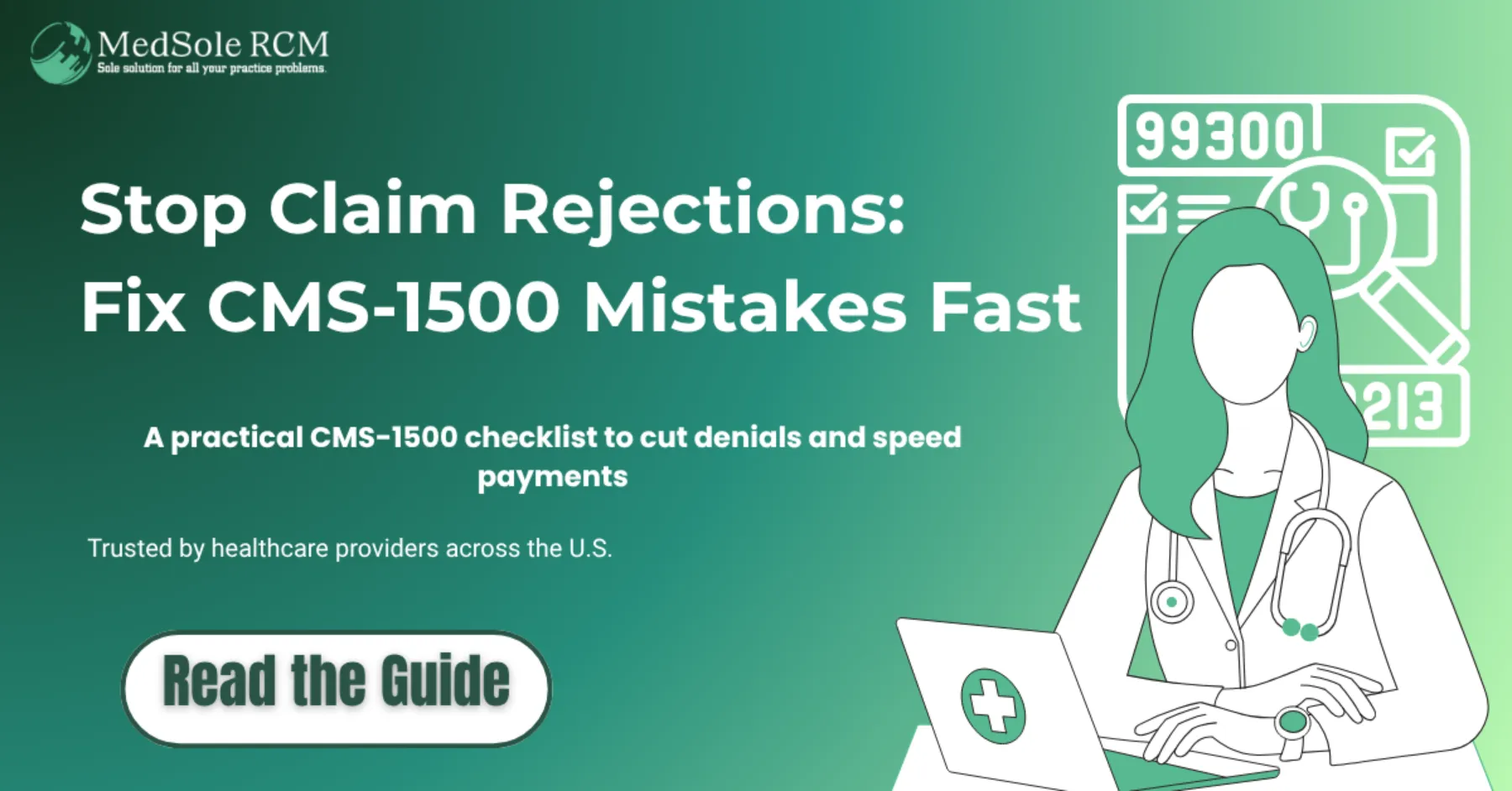
Posted Date: Oct 31, 2025
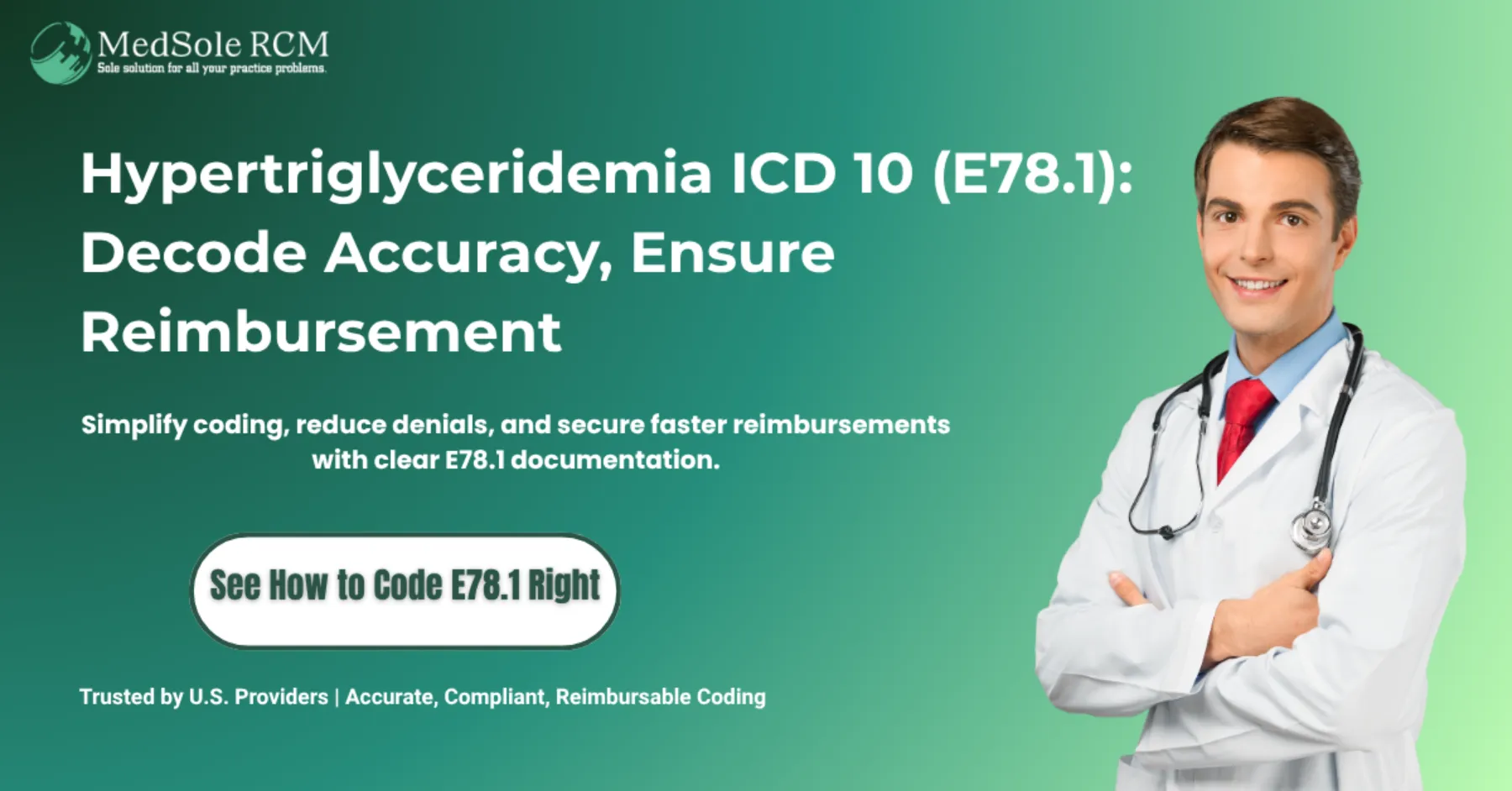
Posted Date: Nov 03, 2025
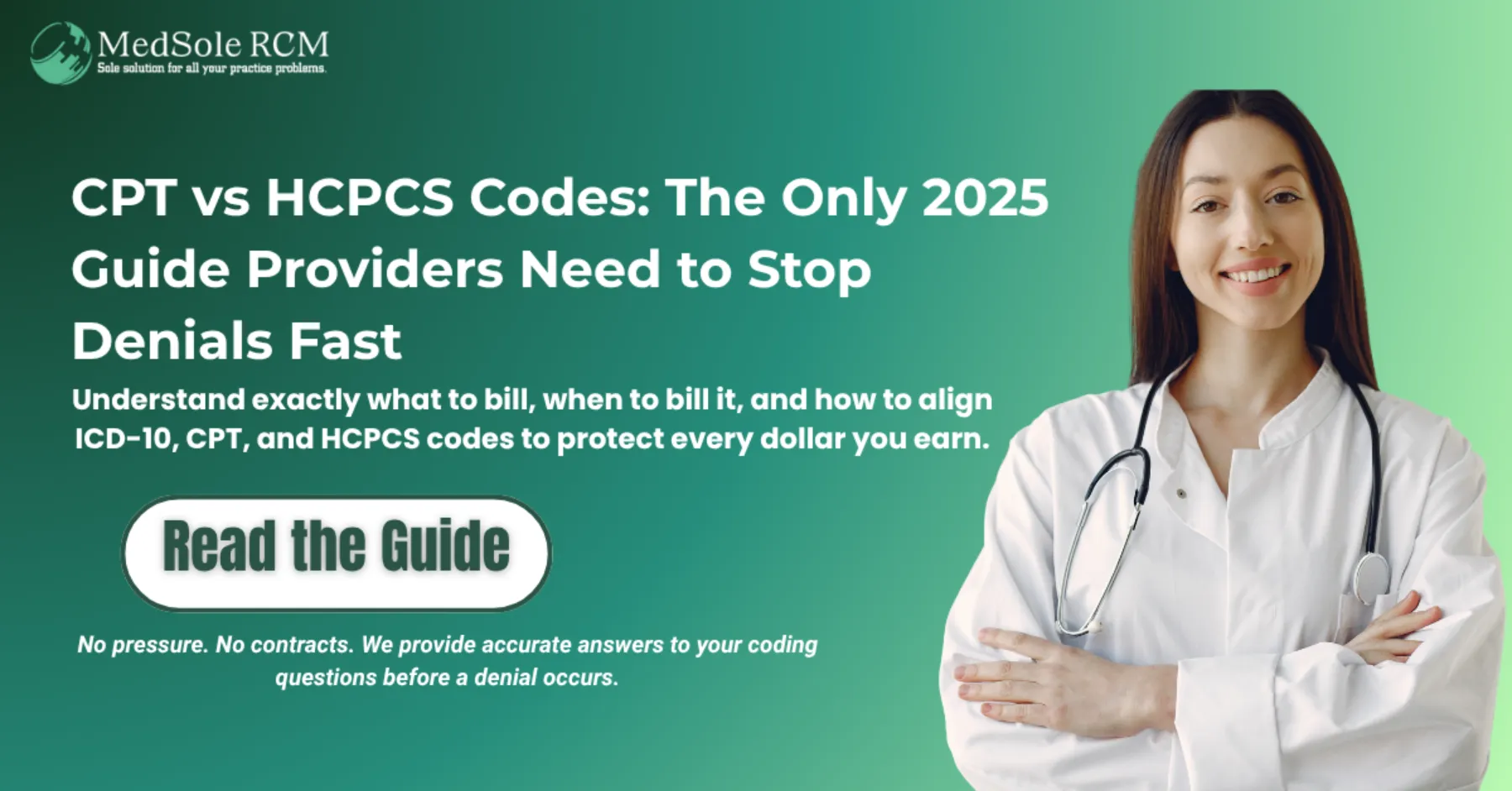
Posted Date: Nov 05, 2025
_11zon.webp)
Posted Date: Nov 11, 2025
.webp)
Posted Date: Nov 14, 2025